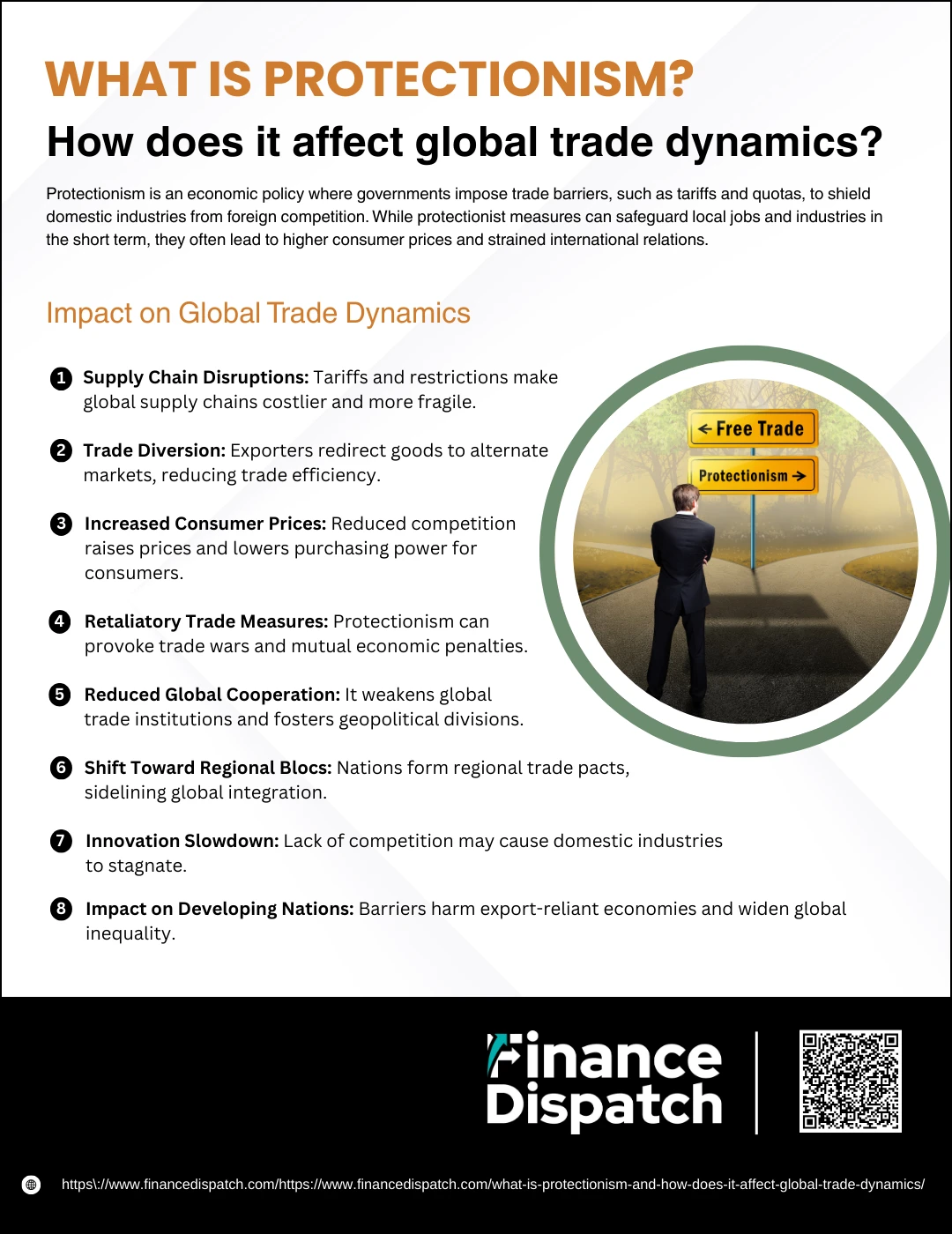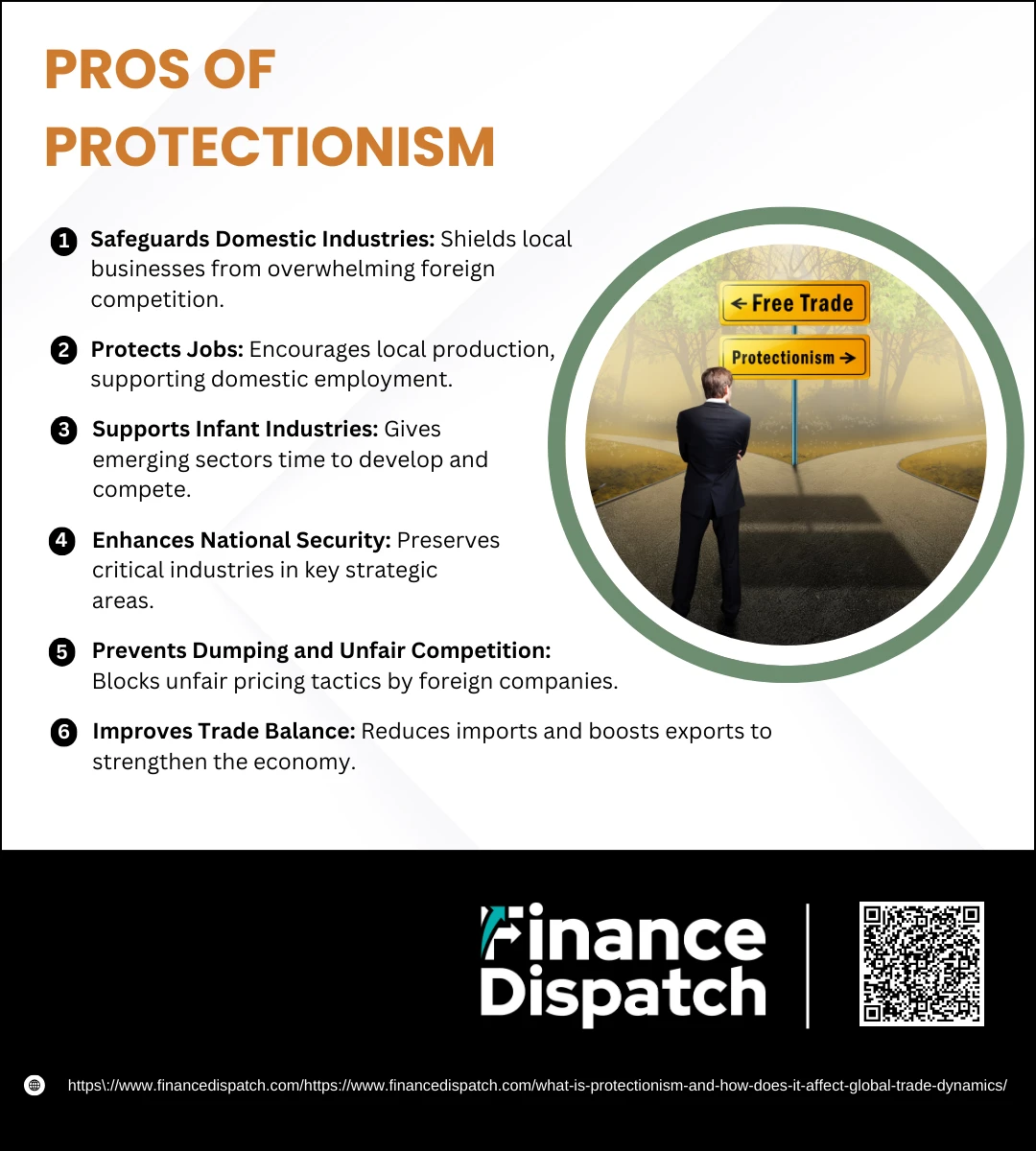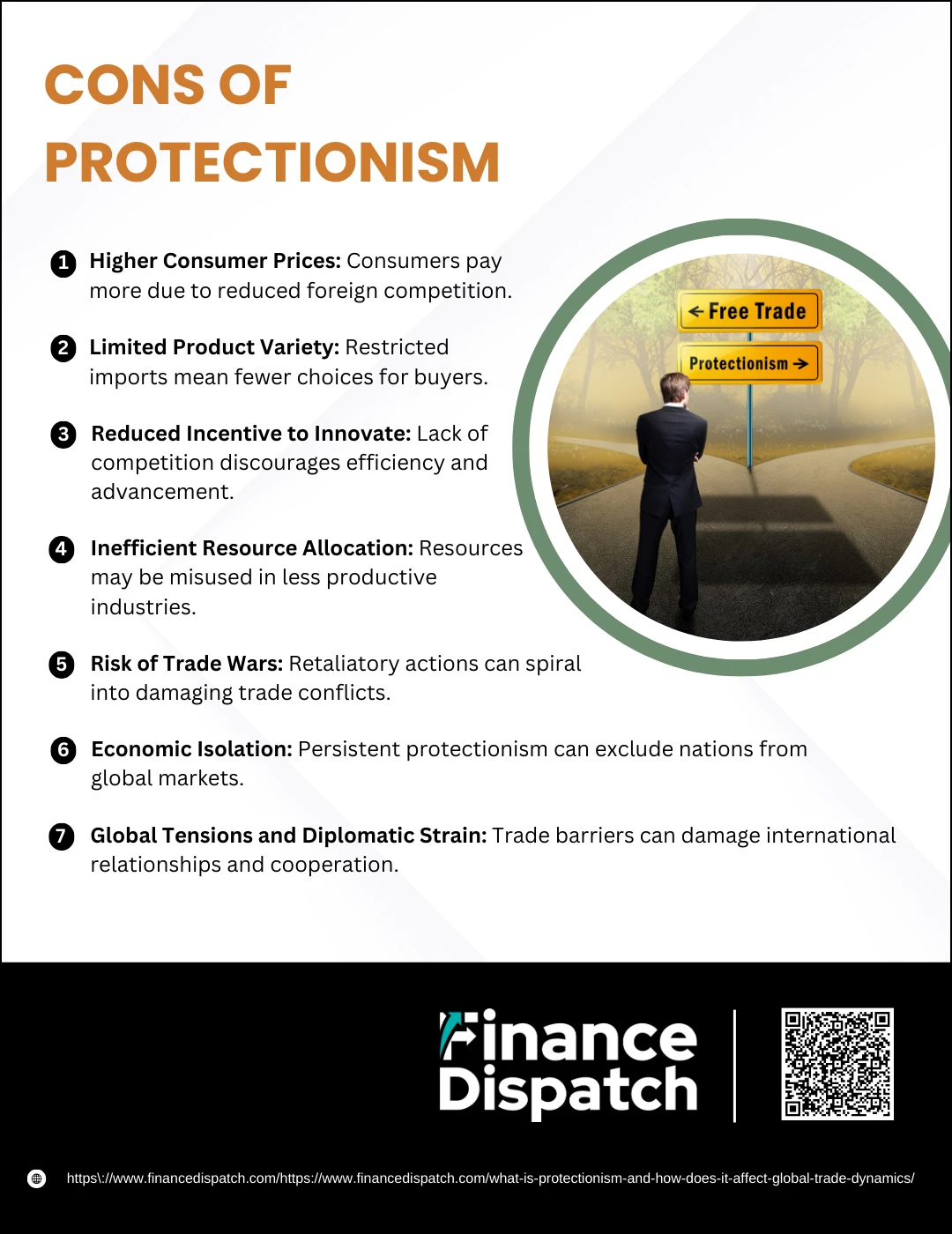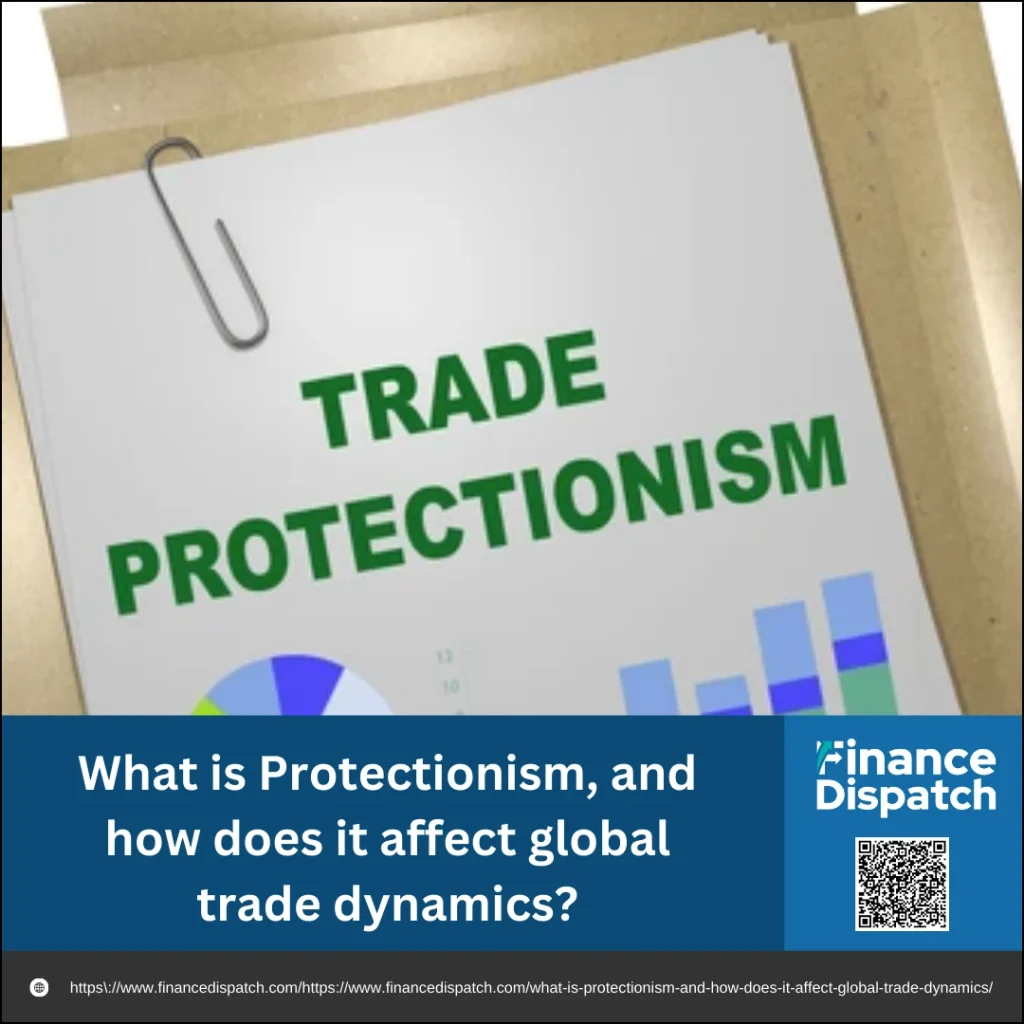In an increasingly interconnected world, protectionism has re-emerged as a defining feature of global trade policy. It refers to a set of government actions—such as tariffs, import quotas, and subsidies—designed to shield domestic industries from foreign competition. While intended to foster local economic growth and job creation, protectionist policies often stir heated debates due to their far-reaching consequences. From disrupting global supply chains to triggering trade wars, protectionism not only shapes the economic landscape within national borders but also influences the broader dynamics of international commerce and cooperation.
What is Protectionism?
Protectionism is an economic policy where governments impose restrictions on international trade to support domestic industries. These measures often include tariffs on imported goods, quotas that limit the quantity of imports, and subsidies that provide financial support to local producers. By making foreign products more expensive or harder to access, protectionism aims to encourage consumers to buy domestically made goods. This strategy is commonly used to protect jobs, foster the growth of emerging industries, and maintain economic stability, especially in sectors considered vital to national interests such as agriculture, steel, or technology.
Historical Context of Protectionism
The roots of protectionism trace back to early economic systems like mercantilism in the 16th and 17th centuries, where nations sought to accumulate wealth by maximizing exports and minimizing imports. In the 19th century, economists like Alexander Hamilton and Friedrich List advocated for protective trade policies to help young industries grow. Protectionism gained global attention during the Great Depression with the U.S. Smoot-Hawley Tariff Act of 1930, which imposed high import duties and triggered a wave of retaliatory tariffs, worsening the economic crisis. Although the post-World War II era emphasized trade liberalization, recent decades have witnessed a resurgence of protectionist measures amid concerns over globalization, job losses, and national security.
 Impact on Global Trade Dynamics
Impact on Global Trade Dynamics
Protectionist policies, though intended to support domestic industries, often reshape the global trade landscape in profound and sometimes unintended ways. By restricting imports or subsidizing local production, countries alter the natural flow of goods, capital, and investment. This not only affects prices and choices within national markets but also has wider implications for international trade relationships, economic cooperation, and long-term global growth.
1. Supply Chain Disruptions
Tariffs, quotas, and embargoes can interrupt the movement of raw materials and finished products. Companies that rely on global sourcing may face delays, increased costs, or forced relocation of production facilities, ultimately making supply chains more fragile and expensive.
2. Trade Diversion
When major markets impose barriers, exporting countries are compelled to divert their goods to alternative destinations. While this may open new trade relationships, it also leads to inefficiencies and a reorganization of global commerce, often at the cost of optimal resource allocation.
3. Increased Consumer Prices
With fewer imports and less competition, domestic producers may raise prices. Consumers end up paying more for goods that are often of equal or lesser quality compared to their foreign counterparts, decreasing their real income and purchasing power.
4. Retaliatory Trade Measures
Protectionist moves often trigger reciprocal actions from affected countries. This tit-for-tat escalation can lead to full-blown trade wars, which amplify instability in global markets and damage diplomatic ties.
5. Reduced Global Cooperation
Excessive reliance on protectionism undermines multilateral trade organizations like the WTO. Countries may become less inclined to resolve disputes diplomatically, leading to fragmented global trade governance and increasing geopolitical tensions.
6. Shift Toward Regional Blocs
In response to global trade fragmentation, countries may prioritize regional partnerships and free trade agreements (e.g., ASEAN, EU). While this helps maintain trade within allied regions, it can marginalize nations not part of these blocs.
7. Innovation Slowdown
Industries protected from foreign competition may lack the incentive to innovate or invest in efficiency. Over time, this leads to stagnation, as firms become complacent and less responsive to technological advancements or consumer needs.
8. Impact on Developing Nations
Many developing countries depend heavily on access to foreign markets for their exports. Protectionist barriers in wealthier nations can limit their growth opportunities, reduce export revenues, and worsen economic disparities between nations.
Common Tools and Types of Protectionist Policies
Governments employ various tools to implement protectionism, aiming to shield domestic industries from foreign competition. These measures can directly limit the volume of imports or indirectly raise their costs, making locally produced goods more attractive. Each tool serves a distinct purpose, ranging from controlling product quality to providing economic advantages for national producers.
- Tariffs: Tariffs are taxes imposed on imported goods, which raise the price of foreign products in domestic markets. This discourages imports and encourages consumers to buy locally produced alternatives.
- Import Quotas: Quotas restrict the quantity of a particular good that can be imported within a specific period. By limiting supply, quotas can create scarcity and drive demand toward domestic producers.
- Subsidies: Subsidies are financial incentives, such as cash payments or tax breaks, provided to domestic businesses. They reduce production costs, making local goods cheaper and more competitive against imports.
- Product Standards: Countries may set strict safety, health, or environmental standards that foreign goods must meet. These regulations can act as barriers by disqualifying certain imports that do not comply.
- Import Licensing: Governments may require special licenses to import particular goods. This restricts access and allows the state to control the flow and types of imports entering the country.
- Embargoes: Embargoes are complete bans on trade with specific countries or on certain products. Often politically motivated, they serve both economic and diplomatic purposes.
- Currency Manipulation and Exchange Controls: By devaluing their currency or restricting foreign exchange, governments make imports more expensive and exports cheaper, giving domestic producers a competitive edge.
- Voluntary Export Restraints (VERs): These are agreements between exporting and importing countries where the exporter voluntarily limits the quantity of goods shipped, often to avoid harsher trade restrictions later.
 Pros of Protectionism
Pros of Protectionism
Protectionism can play a crucial role in shaping national economic strategies, particularly when countries seek to reduce dependency on global markets or recover from economic disruptions. While free trade fosters global integration, protectionist policies provide a controlled environment where domestic industries can grow and stabilize. These measures can be instrumental in safeguarding national interests, especially in sectors deemed vital for employment, innovation, or security.
1. Safeguards Domestic Industries
Protectionism helps domestic producers stay competitive by shielding them from the overwhelming pressure of large multinational corporations. This is especially beneficial for countries whose local businesses are not yet equipped to compete on a global scale, allowing them to maintain their market share and continue operations without being priced out by cheaper imports.
2. Protects Jobs
By encouraging the consumption of locally produced goods, protectionist policies create and sustain employment. Industries such as manufacturing, agriculture, and textiles often benefit from reduced foreign competition, leading to greater job security for workers in these sectors and helping reduce unemployment.
3. Supports Infant Industries
New or developing industries usually lack the economies of scale and efficiency that mature foreign competitors enjoy. Through tariffs, subsidies, or import restrictions, protectionism gives these sectors time to grow stronger, invest in technology, and eventually compete in the international market without being prematurely eliminated.
4. Enhances National Security
Certain sectors are too important to be outsourced, such as defense, food production, and energy. Protectionism allows governments to maintain control over these critical industries, reducing vulnerabilities in case of international conflicts, sanctions, or supply chain disruptions.
5. Prevents Dumping and Unfair Competition
Foreign companies sometimes engage in dumping—selling goods at artificially low prices to dominate a market. Protectionist policies, like anti-dumping tariffs, help protect domestic firms from being undercut by these unfair practices, maintaining a more balanced and fair competitive environment.
6. Improves Trade Balance
By curbing the volume of imports and promoting exports through subsidies or incentives, protectionism can help reduce trade deficits. This improves the country’s current account and contributes to a stronger, more self-reliant economy.
 Cons of Protectionism
Cons of Protectionism
While protectionism may offer certain short-term advantages, it often comes with long-term costs that can hinder a country’s economic efficiency and global competitiveness. Critics argue that protectionist policies can distort markets, reduce consumer welfare, and isolate domestic industries from innovation and growth opportunities. Overreliance on trade barriers can also provoke retaliation from other nations, leading to broader economic and diplomatic consequences.
1. Higher Consumer Prices
Import restrictions like tariffs and quotas make foreign goods more expensive, allowing domestic producers to raise prices. Consumers often end up paying more for fewer choices, especially in markets with limited local alternatives.
2. Limited Product Variety
Protectionism reduces the availability of imported goods, leading to fewer options for consumers. This is particularly noticeable in sectors like electronics, fashion, or automobiles, where international brands offer variety and innovation.
3. Reduced Incentive to Innovate
Domestic industries shielded from foreign competition may become complacent. Without competitive pressure, businesses may have less motivation to innovate, improve efficiency, or invest in research and development.
4. Inefficient Resource Allocation
Protectionist policies often divert resources to less productive industries that survive only because of government support. This can weaken overall economic efficiency and limit growth in more competitive sectors.
5. Risk of Trade Wars
Other countries may retaliate with their own tariffs and barriers, triggering trade wars. These conflicts escalate costs, disrupt supply chains, and create uncertainty for businesses operating globally.
6. Economic Isolation
Persistent use of protectionism can lead to isolation from international markets. Countries that close off trade risk missing out on foreign investment, technological exchange, and cooperative trade agreements.
7. Global Tensions and Diplomatic Strain
Trade barriers can strain international relations, especially when imposed unilaterally or perceived as unfair. Diplomatic conflicts arising from protectionism can hinder cooperation on broader issues like climate change, security, and humanitarian aid.
Real-World Examples of Protectionism
Protectionist policies have been widely used by countries around the world to defend domestic industries, respond to economic crises, or assert political leverage. These real-world examples show how tariffs, quotas, subsidies, and trade restrictions are applied in practice—and highlight both the intended and unintended consequences of such strategies on global trade relations.
1. U.S. Steel and Aluminum Tariffs (2018)
The United States imposed tariffs on steel (25%) and aluminum (10%) imports under the Trump administration to protect domestic manufacturers. This led to higher input costs for U.S. industries and retaliatory measures from trade partners.
2. EU Common Agricultural Policy (CAP)
The European Union provides heavy subsidies to its farmers and imposes high tariffs on agricultural imports. While CAP protects European farmers, it has been criticized for distorting global food markets and disadvantaging farmers in developing countries.
3. India’s Electronics Import Quotas
To boost its domestic electronics manufacturing, India imposed quotas on imports of products like televisions and smartphones. This policy encourages local production but can also reduce access to advanced foreign technology and components.
4. China’s Agricultural Product Regulations
China enforces strict quality and safety standards on imported food, making it difficult for foreign producers to enter the Chinese market. These regulations are framed as consumer protection but often serve as trade barriers.
5. Banana Wars (EU vs. Latin America)
In the 1990s, the EU imposed high tariffs on bananas from Latin American countries to favor producers in former European colonies. The resulting trade dispute with the U.S. and Latin American nations lasted for years and highlighted the tensions protectionism can create.
6. Indonesia’s Raw Material Export Ban (2022–2023)
Indonesia banned exports of certain raw materials like nickel to promote domestic processing industries. While intended to increase local value-add, the ban disrupted global supply chains for electric vehicle components.
7. U.S.-China Trade War
Starting in 2018, the U.S. and China imposed hundreds of billions of dollars in tariffs on each other’s goods. This prolonged conflict affected global markets, raised consumer prices, and forced companies to reconfigure supply chains.
Protectionism vs. Free Trade
Protectionism and free trade represent two contrasting approaches to managing international commerce. While protectionism focuses on shielding domestic industries through barriers like tariffs and quotas, free trade emphasizes the removal of such restrictions to promote open and competitive global markets. Each system has its advantages and drawbacks, and countries often oscillate between the two based on economic goals, political pressures, or strategic interests.
| Aspect | Protectionism | Free Trade |
| Trade Barriers | High tariffs, quotas, subsidies, and regulations to limit imports | Minimal or no trade barriers; open access to foreign markets |
| Domestic Industry Impact | Encourages growth by limiting foreign competition | Exposes local businesses to global competition |
| Consumer Prices | Often higher due to reduced competition and limited imports | Generally lower due to increased supply and competitive pricing |
| Product Variety | Limited, as foreign goods are restricted | Diverse, with wide availability of global products |
| Innovation & Efficiency | May decrease due to lack of competition | Encourages innovation and efficient resource use |
| Job Protection | Supports local employment, especially in vulnerable sectors | Jobs may shift due to global competition, but new roles emerge in other sectors |
| Global Relations | Can lead to trade disputes and retaliation | Promotes cooperation and interdependence between nations |
| Economic Growth | May offer short-term gains but risks long-term stagnation | Historically linked to sustained economic growth and higher living standards |
Economic Theories Behind Protectionism
The rationale for protectionism is grounded in several economic theories that emphasize the strategic role of government in managing trade. One of the most cited is the infant industry argument, which suggests that new or developing industries need temporary protection from international competitors until they become mature and competitive. Another is the strategic trade theory, which argues that government intervention can help domestic firms gain advantages in key global industries, especially those with high barriers to entry or economies of scale. Additionally, protectionist policies are sometimes justified as a response to market failures or unfair trade practices, such as dumping or foreign subsidies. These theories contrast with classical free trade models advocated by economists like Adam Smith and David Ricardo, who promoted open markets based on comparative advantage, where nations specialize in producing goods they can create most efficiently. While free trade supports long-term global efficiency, protectionist theories focus on short-term national benefits and economic stability
The Future of Protectionism
The future of protectionism is likely to be shaped by a complex mix of geopolitical tensions, supply chain realignments, and growing economic nationalism. As countries face challenges like global pandemics, regional conflicts, and technological shifts, many are reevaluating their dependence on international trade and opting for greater self-reliance. Policies such as reshoring, friendshoring, and strategic subsidies are becoming more common, especially in sectors like semiconductors, clean energy, and food security. While protectionist measures may offer resilience and national control, they also risk fragmenting global trade and increasing costs for consumers and businesses. Moving forward, the global economy may witness a more selective and strategic use of protectionism, balanced by efforts to maintain open trade through regional agreements and multilateral.
Conclusion
Protectionism continues to be a powerful and controversial force in shaping global trade dynamics. While it can provide short-term relief for domestic industries, protect jobs, and support national security, it often comes at the expense of higher consumer prices, reduced innovation, and strained international relations. As the world navigates economic uncertainties and shifting geopolitical landscapes, governments must weigh the benefits of safeguarding local interests against the long-term advantages of open trade. A balanced, strategic approach—grounded in cooperation, adaptability, and fair practices—will be essential for promoting sustainable economic growth in an increasingly interconnected global economy.



